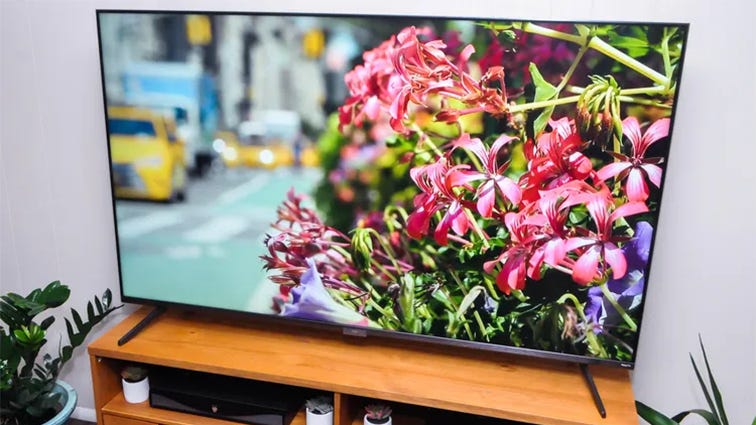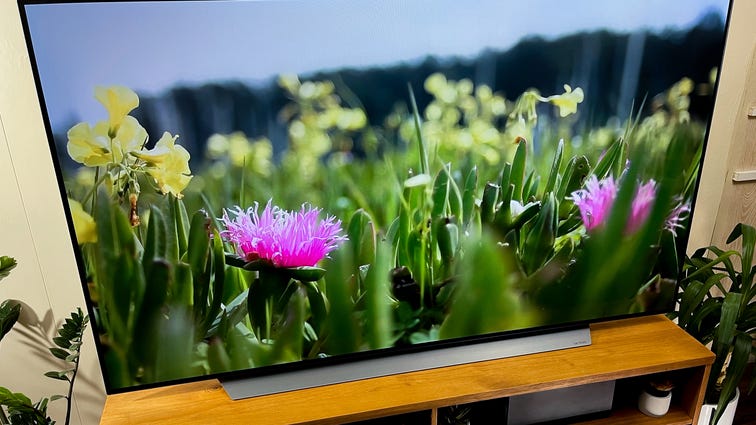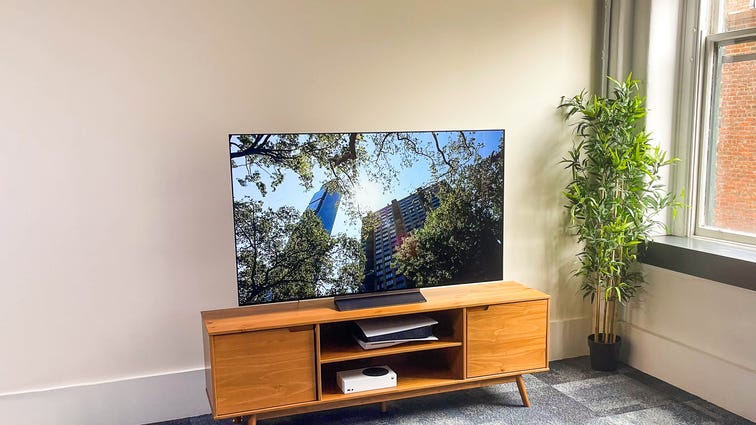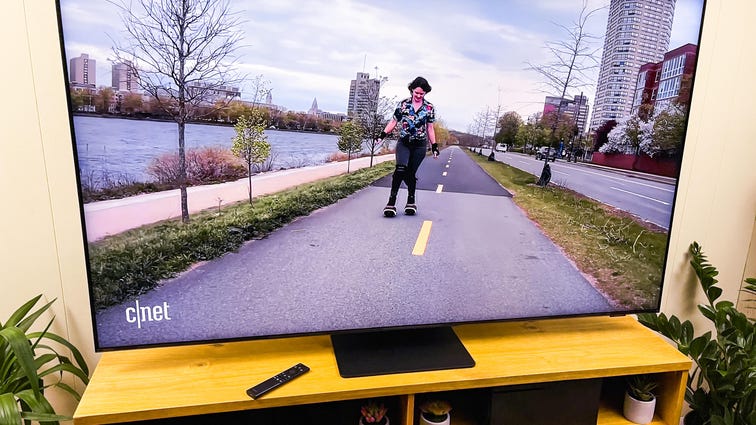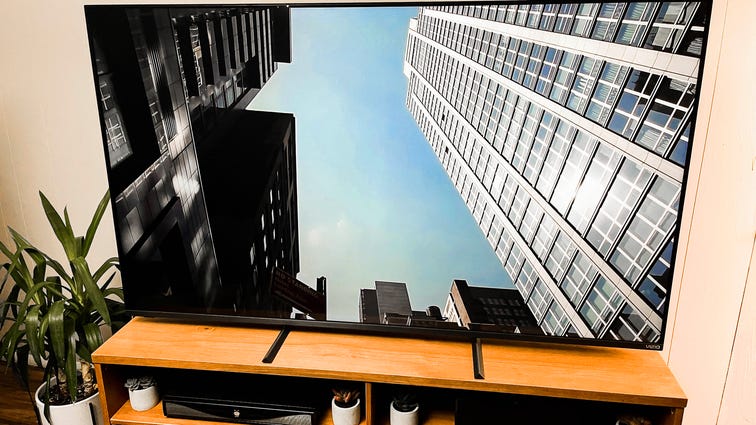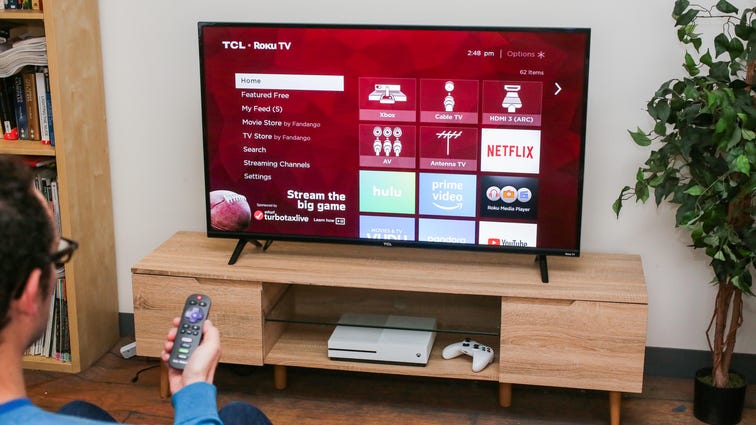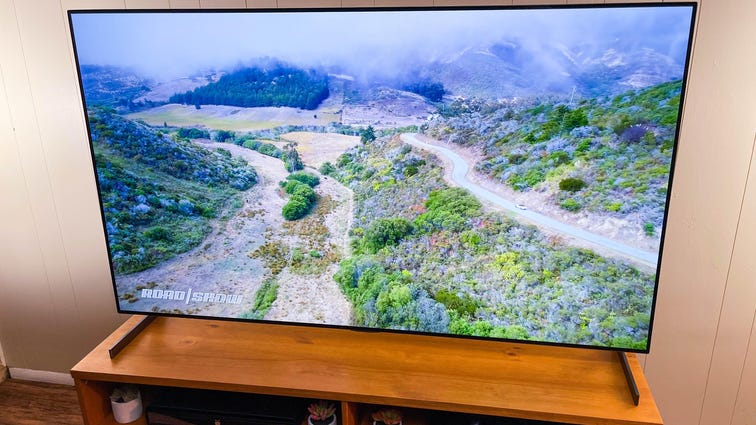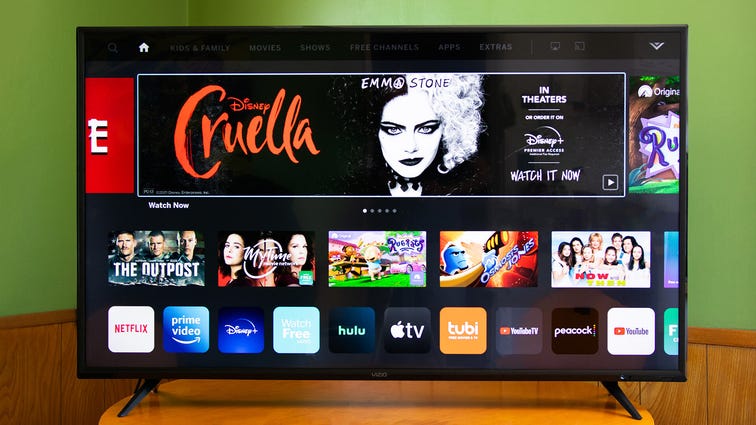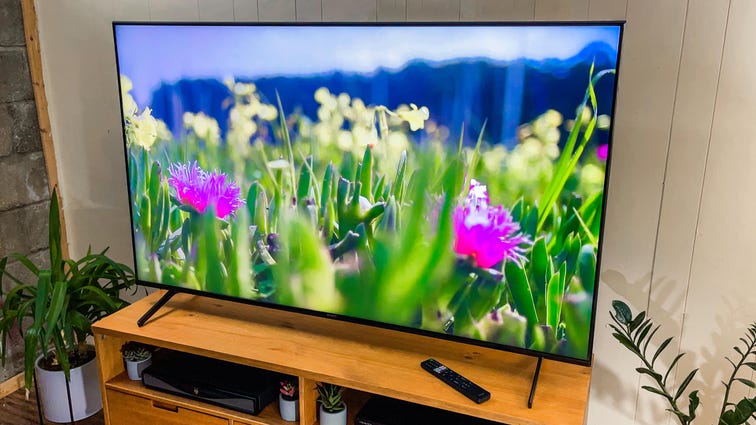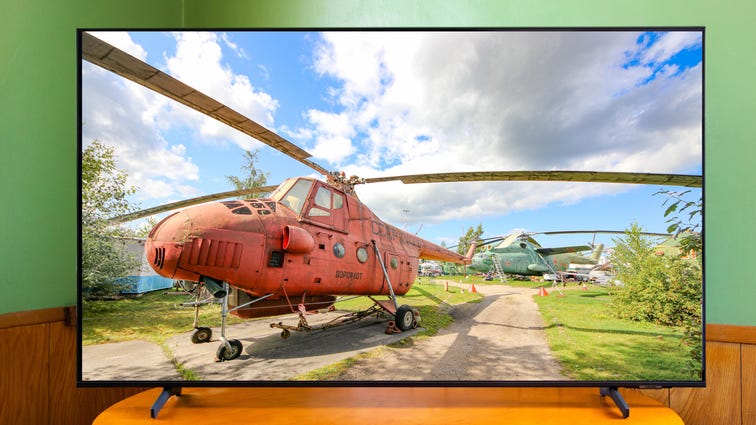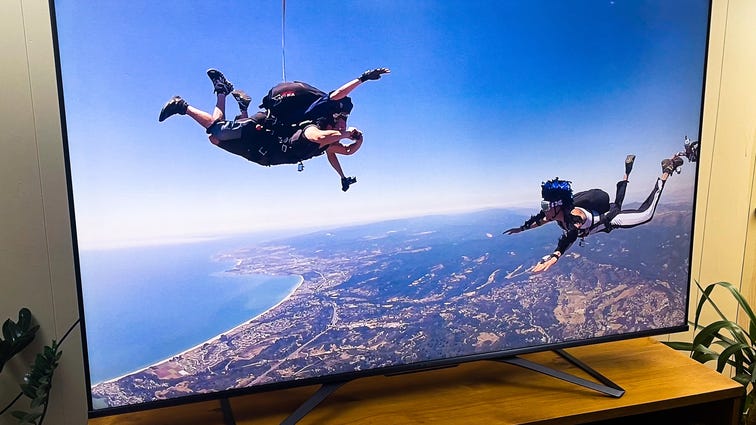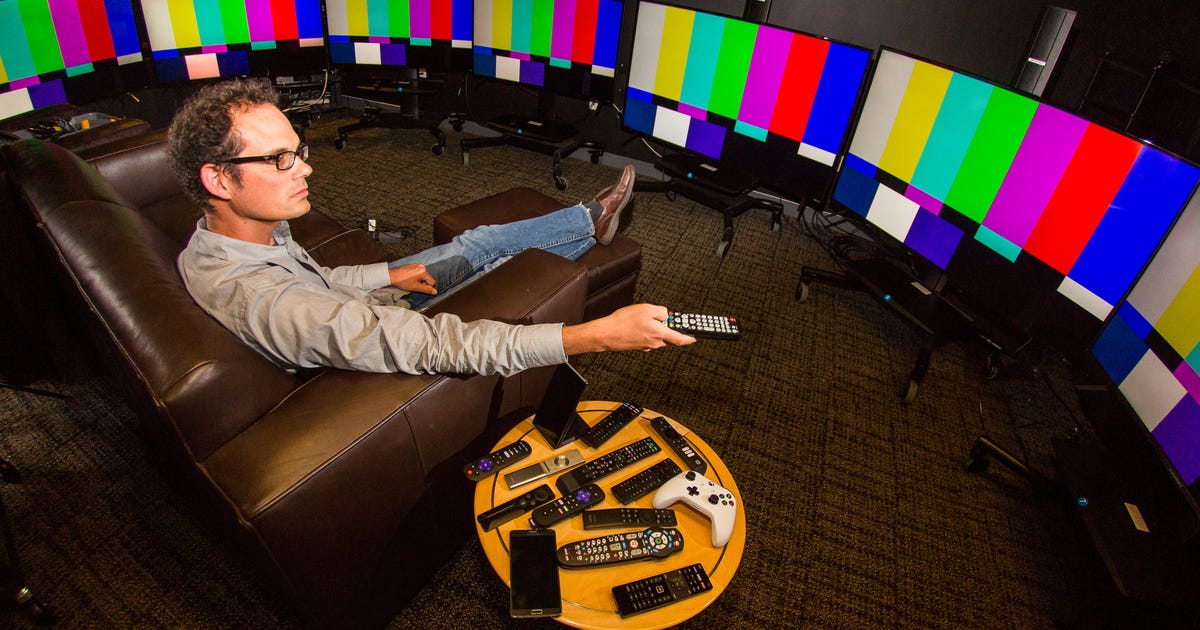
Best TV for 2022 – CNET
Spring is usually the time when the new generation of TVs starts hitting store shelves and online retailers. But if you’re looking to grab a new TV now, you should opt for a 2021 model instead. TV tech is mature at this point, and the improvements we’ll see on the new 2022 models are relatively minor. Plus, buying last year’s TV now could save you hundreds compared to the new model, and get you pretty much the same picture quality and features.
Below you’ll find the best TVs to buy at the moment based on my hands-on testing. TVs come with a range of smart TV streaming systems — from Roku to Google TV to Samsung — but my reviews concentrate on the best TV picture quality for the money. LCD TVs with local dimming, mini-LED or QLED technology are usually less expensive than OLED televisions, and still perform well while supporting 4K resolution with HDR. An OLED television will give you the best picture quality, however, and could be more affordable than you think.
Based on my years of experience and side-by-side comparisons in CNET’s test lab, I’ve chosen the best TV set of every type. I’ll update this list periodically and if I haven’t reviewed the newest version yet, I’ll include a “2022 Outlook” section to give you a sense of what you’re missing (or not).
David Katzmaier/CNET
No TV I’ve ever tested offers this much picture quality for as little cash. The TCL 6-Series Dolby Vision HDR TV has an excellent image thanks to mini-LED tech and well-implemented full-array local dimming that helps it run circles around just about any other TV at this price. It’s also a solid choice for gamers, with a THX mode that combines low input lag and high contrast. As if that’s not enough, the Roku TV operating system is our hands-down favorite.
This TV first came out in 2020 but is still a current model and remains my top choice. TCL also sells an 8K version of the 6-Series, but I don’t think it’s worth the extra money, as well as a Google-powered version I have yet to review (although according to TCL its image quality is the same as this Roku version).
Sizes: 55-, 65-, 75-, 85-inch. (The prices shown below are for the 75-inch size.)
2022 outlook: TCL has yet to announce a successor for this TV. I’m betting it will do so later this spring.
David Katzmaier/CNET
With picture quality as good as any TV I’ve ever tested and a price that’s not too crazy, the LG C1 OLED TV is still my go-to pick for people who prioritize picture and are willing to pay for it. It beats any non-OLED TV on this list, including the Samsung QN90A below, with its perfect black levels, unbeatable contrast and superb off-angle viewing. It also has the best gaming features, making it the perfect companion to an Xbox Series X or S, PlayStation 5 or both. The C1 comes in a wide variety of sizes as well, although the bigger models are really expensive.
I also reviewed the successor to the C1, the LG C2, and the two have essentially identical picture quality. The newer version brings a couple of minor improvements, including lighter weight and a 42-inch size. Since the 2021 C1 currently remains on sale for hundreds less than the 2022 C2, I recommend getting the C1 instead.
Sizes: 48-, 55-, 65-, 77-, 83-inch. (The prices shown below are for the 65-inch size.)
David Katzmaier/CNET
The C2 is the first 2022 TV we’ve reviewed and it’s superb, but right now the 2021 model is a better deal. We compared the C2 directly to last year’s C1, side-by-side. In terms of picture quality, the two were basically identical, despite the fact that LG touts the new “Evo” panel on the C2. Real improvements include carbon-fiber construction for up to 47% lighter weight — the 65-inch version I reviewed weighs just 37 pounds with its stand, compared to 72 pounds for the 65-inch C1 — as well as some additional tweaks to game mode and a new “always on” feature. Those enhancements aren’t worth the price difference, so our advice is to buy a C1 now or wait until later this year, when the C1 sells out and the C2 gets a price cut.
The C2 is also available in a 42-inch size (coming in May), while the smallest C1 is a 48-inch model.
Sizes: 42-, 48-, 55-, 65-, 77-, 83-inch. (The prices shown below are for the 65-inch size.)
David Katzmaier/CNET
Looking for a high-end TV with spectacular image quality, but don’t want an OLED? The Samsung QN90A is your best bet. This TV uses QLED TV tech augmented by mini-LED for a brighter image than any OLED TV. The spectacular contrast of OLED still won out in my side-by-side tests, but the QN90A QLED screen comes closer than ever.
Sizes: 50-, 55-, 65-, 75-, 85-inch. (The prices shown below are for the 65-inch size.)
2022 outlook: The 2022 version of the Samsung QN90A is called the QN90B. I haven’t reviewed it yet, but I expect it to have very similar image quality despite the fact that the 2022 version has a lower “Quantum HDR” spec (24x) then the 2021 version (32x). Samsung touts improved processing and a few extra features but nothing earth-shattering, and the 2022 QN90B currently costs hundreds of dollars more than the 2021 QN90A.
David Katzmaier/CNET
The TVs above are amazing, but what if you can’t afford that level of picture quality? The Vizio MQ7 is one of the least expensive TVs to feature full-array local dimming, which lets it reproduce TV shows, movies and games with enough contrast and pop to do HDR justice. It’s a 60Hz model, not 120Hz, but it still handles variable refresh rate games for extra smoothness. If you can’t save up for the TCL 6-series, the Vizio MQ7 makes an excellent consolation prize.
Sizes: 50-, 55-, 58- 65-, 70-, 75-inch. (The prices shown below are for the 55-inch size.)
2022 outlook: Vizio has yet to announce a successor for this TV but I expect the company to do so later this spring.
Sarah Tew/CNET
Roku is our favorite platform for live TV streaming services like Netflix, Hulu and Amazon Prime Video, and it’s even better baked into the TV. This TCL 4-Series can’t beat any of the models above on image quality — its 4K resolution and HDR performance don’t do much to help the picture — but it’s perfectly fine for most people, especially at this price.
Note that TCL also makes a Google TV and an Android TV version of the 4-Series. I haven’t reviewed them, but I expect similar picture quality to the Roku version.
Sizes: 43-, 50-, 55-, 65-, 75-, 85-inch. (The prices shown below are for the 43-inch size.)
2022 outlook: TCL has yet to announce a successor for this TV, but I’m betting it will later this spring.
Sarah Tew/CNET
What’s that you say? You just want the best TV and can afford whatever you want? Here you go. In my tests the LG G1 OLED TV and the cheaper C1 above were the best TVs I’ve ever reviewed, with unbeatable contrast, perfect wide viewing angle and excellent uniformity. The main advantage of the G1 is slimmer, more wall-friendly design compared with the C1, so if you value that style and can afford it, this is the TV to get.
Sizes: 55-, 65-, 77-inch. (The prices shown below are for the 55-inch size.)
2022 outlook: I haven’t reviewed the successor to the G1, called LG G2 series, but I’m expecting it to deliver slightly better picture quality than the G1 or the C2 thanks to improved brightness. The G2 also comes in a new size, 97 inches, although its pricing and availability have yet to be announced. Otherwise the differences between the 2021 G1 and 2022 G2 are relatively minor, and the G1 remains on sale for hundreds of dollars less.
Geoffrey Morrison/CNET
Vizio’s V-series is our favorite budget alternative to the TCL 4-Series Roku TV. We liked Roku’s smart TV system better (sound familiar?), but the V-series has some advantages, including a better remote with voice and more advanced picture settings. Picture quality between the two was basically the same, so if you don’t have a preference, it makes sense to get the cheapest one.
Sizes: 43-, 50-, 55-, 58- 65-, 75-inch. (The prices shown below are for the 55-inch size.)
2022 outlook: Vizio has yet to announce a successor for this TV but I expect it to do so later this spring.
David Katzmaier/CNET
With excellent picture quality, anchored by full-array local dimming and plenty of brightness to make HDR content shine, the X90J is Sony’s answer to the TCL 6-Series and step-up Vizio models. This LED TV’s sleek looks and the Google TV operating system score additional points, as does its next-gen console support — including variable refresh rate (VRR), enabled by a software update in March 2022 — and built-in NextGen TV tuner. This Sony TV is perfect for PS5 gaming and works with Alexa & Google Assistant. If you want an “S” brand, this is one of the best values we’ve tested.
Sizes: 50-inch, 55-inch, 65-inch, 75-inch. (The prices shown below are for the 55-inch size.)
2022 outlook: The successor to the X90J is the X90K. I haven’t reviewed the new model yet but its image quality specifications are largely similar to the 2021 version, so I don’t expect many picture quality differences. Unlike the 2021 version, the new model ships with VRR enabled out of the box.
David Katzmaier/CNET
Samsung is the TV brand that sells more TVs than anyone and one of the most popular is the Q60A series. Its sleek OLED screen design stands out compared with the other TVs on this list — although the ultrathin OLED models are even sleeker — it offers better features and image quality than budget models like the TCL 4-Series, and it comes in a vast array of sizes. The TVs above are all superior values, but if you want a Samsung TV and can’t afford the QN90A, this is a great choice.
Sizes: 43-, 50-, 55-, 60- 65-, 70- 75-, 85-inch. (The prices shown below are for the 55-inch size.)
2022 outlook: The successor to the Samsung Q60A is the Q60B. We haven’t reviewed it yet but according to Samsung’s web site its specifications are basically the same as the 2021 version, so we expect similar picture quality. The Q60A is slightly cheaper than the Q60B, so it’s our pick.
David Katzmaier/CNET
Most of the TVs on this list are bright enough for just about any room, but maybe you want a screen that’s as bright as possible. The U8G outshines others in its price range and was basically as bright as the significantly more expensive Samsung QN90A. Its image quality falls a bit short in other areas and its selection of sizes is limited, but if raw brightness is what you crave, the U8G delivers.
Sizes: 55-, 65-inch. (The prices shown below are for the 55-inch size.)
2022 outlook: The successor to the Hisense U8G is the U8H, shipping later this summer. The new version uses a mini-LED backlight and could improve the image quality of the 2021 model, but we haven’t reviewed it yet so we can’t say for sure. Unlike the 2021 U8G, the 2022 U8H includes an ASTC 3.0 tuner.
How does CNET test TVs?
Our TV reviews follow a rigorous, unbiased evaluation process honed over nearly two decades of TV reviews. Our primary TV test lab has specialized equipment for measuring light and color, including a Konica Minolta CS-2000 spectroradiometer, a Murideo Sig-G 4K HDR signal generator and an AVPro Connect 8×8 4K HDR distribution matrix. We use Portrait Displays CalMan Ultimate software to evaluate every TV we review. In every CNET TV review, three or more similar TVs are compared side by side in various lighting conditions playing different media, including movies, TV shows and games, across a variety of test categories, from color to video processing to gaming to HDR. Our reviews also account for design, features, smart TV performance, HDMI input and gaming compatibility and other factors.
Read more: How We Test TVs
TV FAQs
I’ll post the answers to commonly asked TV questions below. If you have any others, feel free to reach out on Twitter (@dkatzmaier), or by clicking the little envelope icon on my CNET profile page. Doing so will let you send a message straight to my inbox.
How big a TV should I get?
In my opinion bigger is better, and your money is best spent on large screen sizes rather than a slight upgrade in image quality. The answer also depends on room size and seating distance: If you have a big room and sit farther away, you’ll want a bigger TV. The answer also depends on room size and seating distance.
Burn-in is when part of an image — for example a channel logo, news ticker or a scoreboard on a TV — persists as a ghostly background no matter what else appears onscreen. Burn-in is possible with any OLED TV, but it’s not likely with normal use. The best way to prevent burn-in is to vary what you watch.
What is the best smart TV system for streaming?
At CNET our favorite is Roku for its simplicity, but different systems like Google TV, Amazon Fire TV, Samsung and LG have different strengths, in particular for voice commands. In any case we don’t consider the built-in smart TV system that important because you can always connect a streaming device to any TV.
How do I get the best TV sound?
Most TVs sound terrible because their thin cabinets don’t have room for decent-size speakers or bass. If you want to get good sound you should buy an external audio system. Even an inexpensive soundbar will deliver much better audio quality than a TV’s built-in speakers.

